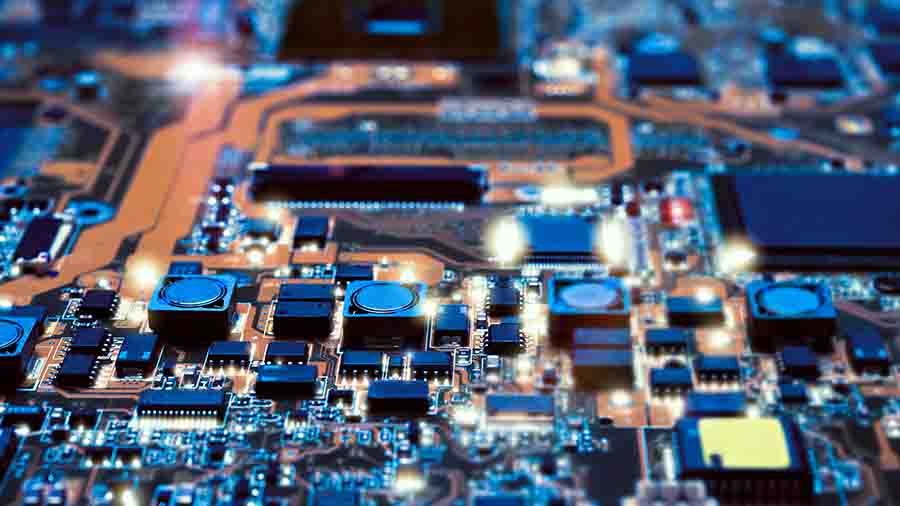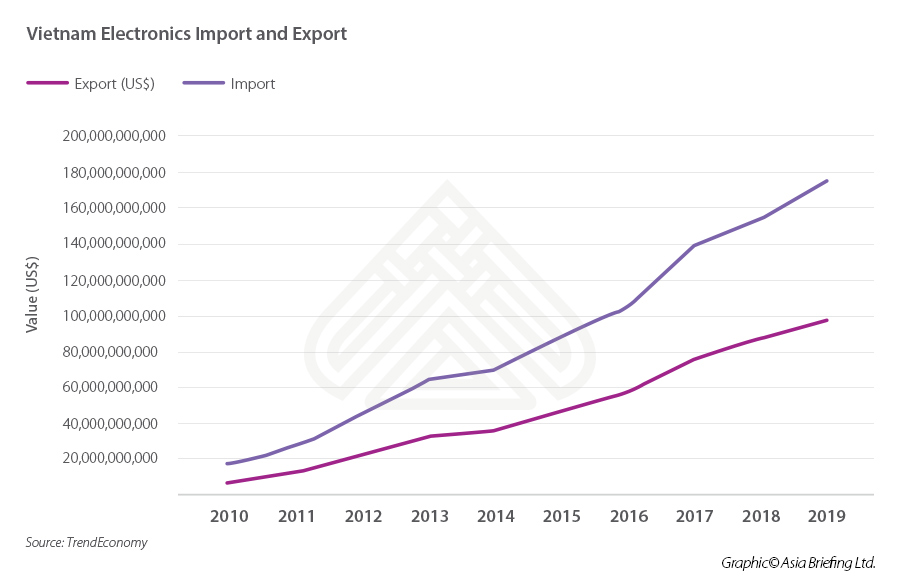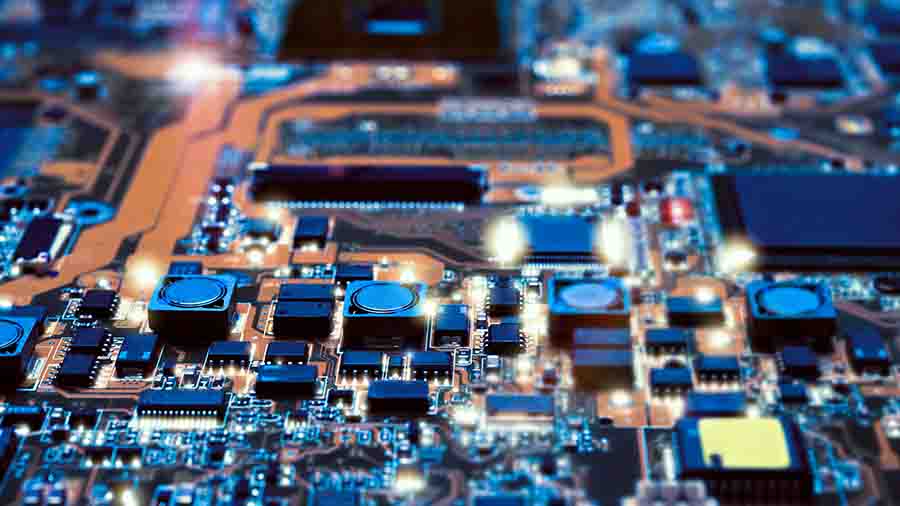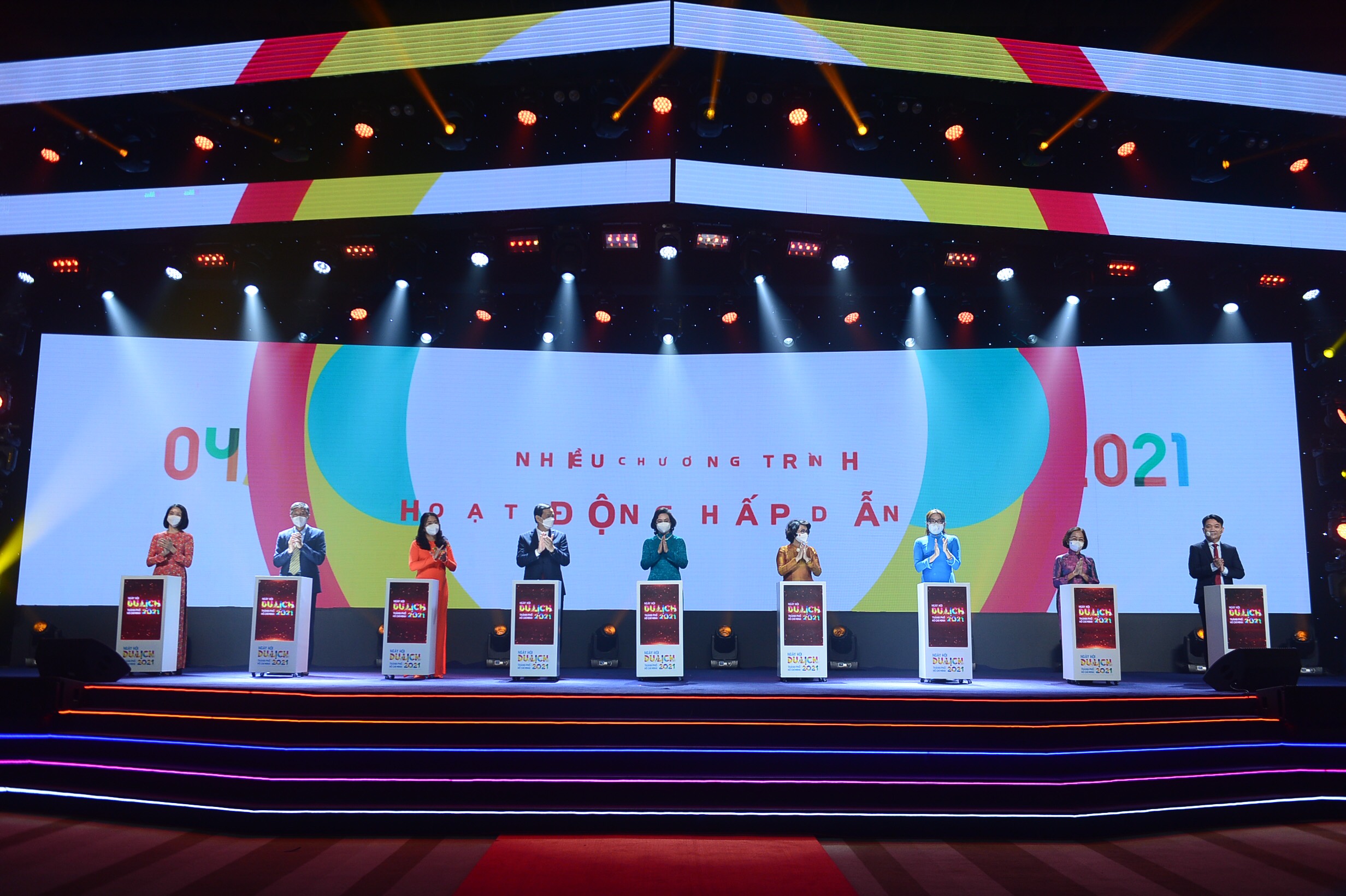Vietnam’s electronics industry presents significant opportunities for investment. Vietnam Briefing discusses the trends and options for market entry.
Vietnam’s electronics industry presents significant opportunities for investment. Vietnam Briefing discusses the trends and options for market entry.

- Vietnam’s electronics industry (EI) is one of the fastest-growing and most crucial industries in Vietnam.
- Dominated by multinational businesses, EI has significantly boosted Vietnam’s trade volume and contributed to its GDP in the past decade.
- With emerging opportunities due to trade liberalization, corporate tax reduction, labor quality improvement, and government reforms, Vietnam has become a favorable option for foreign investors looking to relocate their EI investment in Asia.
Vietnam’s electronics industry (EI) plays a crucial role in Vietnam’s fast-growing economy contributing to Vietnam’s successes in its manufacturing industry.
In addition, Vietnam’s implementation of key trade agreements, strong demographic tailwinds, and supportive government policies are likely to continue this trend and present a variety of opportunities for investors.
To tap these trends effectively, it will be critical to understand recent events in electronics production, the structure of Vietnam’s electronics sector, and prepare to meet opportunities as they arise.
The state of Vietnamese electronics production
Amid the ongoing US-China trade war and rising manufacturing costs in China, Vietnam has reaped the benefits to further participate in regional and global value chains.
Vietnam has climbed the ranks as a key electronics exporter, from a modest 47th place in 2001 to 12th place in 2019. Especially, mobile phone exports were ranked second worldwide, with a value of over US$50 billion in 2019.

Vietnam’s EI imports have nearly doubled from 2015 to 2019, while exports have constantly increased by an average of US$12 billion per year — rising from US$47.3 billion to US$96.9 billion in 2019.
In 2019, EI exports amounted to 36 percent of total exports from Vietnam, increasing by 1.15 percent compared to 2018. Imports accounted for 30 percent of total import flow, increasing by 2.01 percent from 2018. Of this, sales of electronics from Vietnam also went up by 12.1 percent, compared to 2018.
Electronics Industry Import and Export Structures
Export
In 2019, top EI export destinations were to China (19.3 percent), the US (18.2 percent), South Korea (9.1 percent), Hong Kong (4.9 percent), and Japan (4.89 percent). Main export commodities include transmission apparatus, mobile phones, TVs, cameras (41 percent), electrical apparatus (18.2 percent), and electronic integrated circuits and microassemblies (11.9 percent).
Import
For the same year, Vietnam mainly imported its electrical machinery and components from China (33 percent), South Korea (31 percent), Japan (7.99 percent), and the US (6.52 percent). Among imported products, 40 percent were electronic integrated circuits and microassemblies, 17 percent were electrical apparatus, and 6 percent were semiconductors devices.
Foreign investment in Vietnamese electronics production
EI in Vietnam is mainly dominated by foreign companies, particularly multinational companies. Although the number of foreign-invested enterprises (FIEs) is only one-third of the total EI enterprises, from 2016 to 2019, their export share accounted for over 90 percent of total exports and covered 80 percent of the domestic market demand.
As of June 2020, some large FIEs have completed their production plant relocation to Vietnam. Notably, LG’s smartphone production has moved entirely from South Korea to Hai Phong. Apple has moved part of the production of its AirPods, while Nintendo has also transferred a part of its Switch Lite game console to Vietnam.
Emerging electronics investment opportunities
Trade liberalization
Companies looking to invest in Vietnam can take advantage of several Free Trade Agreements (FTAs), with many agreements signed through its membership in the Association of Southeast Asian Nations (ASEAN).
In 2018, the average import tariff for consumer goods in the EU was 8.9 percent for non-EU countries without any trade agreements. Under the recently ratified EU-Vietnam Free Trade Agreement (EVFTA), the vast majority of these tariffs will be eliminated.
While these lower tariffs offer a tempting way to reduce export costs, it is crucial to be aware of the rules of origin guidelines in each FTA. Due to the underdevelopment of supporting industries in Vietnam, EI production is very import-dependent with domestic firms struggling to assimilate into global value chains.
Tax incentives
Not only can investors take advantage of reduced tariffs, but the Vietnamese government also provides corporate income tax (CIT) breaks for companies working in the high-tech sector as well as in high-tech zones, specific industrial zones, and underdeveloped socio-economic regions.
The preferential incentive rate can be extended for up to 15 years if the project’s manufactured goods have “international competitiveness”. From January 2016 onwards, the two preferential rates of 10 percent and 17 percent for 15 years and 10 years, respectively, are available starting from the commencement of generating revenue from the incentivized activities.
Investors may also be eligible for additional tax holidays when they first invest: a 4-year tax exemption and a 9-year 50 percent reduction for those qualifying for the 10 percent CIT rate; a 4-year tax exemption and 5-year 50 percent reduction for those operating in certain areas; a 2-year tax exemption and 4-year 50 percent reduction for operating in certain areas or in some industrial zones.
For R&D projects, 10 percent of annual profits can be placed into a tax-deductible fund before tax is levied.
Government reforms
Electronics, information, and telecommunication technologies are among the top 10 priority sectors approved by the Vietnamese government for the industrial development strategy period 2025-2035.
Investors are also encouraged to operate in designated EI clusters and industrial zones, where they are already equipped with the necessary infrastructure and facilities. As a bonus, the operation may qualify for CIT breaks, as mentioned above.
Favorable demographic structure
According to a study by the United Nations Fund for Population Activities (UNFPA), Vietnam is in the period of its “golden population”, from 2010 to 2040. Additionally, the minimum wage in 2019 in Vietnam was between US$132 and US$190 depending on the region, but much lower than Thailand (US316), Indonesia (US$260), Malaysia (US$247), China (US$365), Singapore (US$1,300) and South Korea (US$1,667).
In terms of labor quality, Vietnamese engineers working in EI have fairly high qualifications compared to their colleagues in the region. According to Samsung Vietnam, 10 percent of Samsung’s software globally is developed by Vietnamese IT engineers. Samsung has thus developed two of its largest R&D Centers in Hanoi and Ho Chi Minh City.
However, there are shortcomings in junior staff training and the quality of graduates of educational organizations. The World Bank’s STEP Skills Measurement Program survey reported that two-thirds of all international firms in Vietnam complained that both the general and vocational education systems did not meet the skill needs of their workplace.
To deal with this issue, the government has launched supportive programs to train workers and domestic firms in supporting industries and facilitate the intra-ASEAN movement of labor.
Planning effective market entry
Given the rapid growth of electronics production, trade, and investment seen in recent years, the time has never been better to make use of Vietnam as a cost center for larger Asian operations or as a full-fledged production hub.
For those keen to explore Vietnam’s emerging investment landscape, a clear idea of where to invest and sell goods, and an understanding of how to structure operations to take advantage of trade agreements and tax incentives will provide a significant boost to any future projects.
Note: This article was first published in August 2016 and has been updated to include the latest developments.







